The Witcher 3 on Switch: a close-up look at a mobile miracle
A stunning handheld achievement, but does the docked experience hold up?
What The Witcher 3 achieved four years ago remains an incredible feat. It's the best example of world building I've seen this generation - from the idyllic White Orchard, to the bustle of Novigrad, it's crammed with detail. And yet, somehow developers Saber Interactive and CD Projekt RED are genuinely delivering something I thought impossible. A Switch conversion now exists - a Complete Edition that crams every DLC and upgrade into a 32GB install. It's honestly the most technically ambitious game I've tested on the system since it launched. However, it also highlights - sometimes brutally - the limitations of porting a triple-A experience to a chipset designed primarily for mobile gaming.
This may well be a no-brainer, but if you're looking for the big TV experience, other, better options are clearly out there. Even factoring out the enhanced consoles, the pristine 1080p of the PlayStation 4 version delivers a whole new level of clarity compared to the very blurry Switch version - and that's before we factor in the visual cutbacks required to get the game running. But it does run, and reasonably well to boot - but the bottom line is that the inherent level of compromise required across the board makes this Witcher 3 conversion far more suited to mobile play.
Somehow squeezing The Witcher 3 into a 32GB footprint is a masterful exercise in compression, but it's easy to see where many of the cuts were made. It begins with the compressed video files, which drop from 1080p to 720p. Again, it's no problem for the portable experience, but the lack of clarity - and compression artefacts - don't really hold up on a living room screen. In-game image quality takes some adjusting to as well: 720p is the highest we've seen the game render at while docked, dropping to 960x540 in our tests at lowest, seen while panning past the city in Toussaint.
In all honesty, it's portable play that is the star of the show. It's where Saber and CDPR's work comes together; a justified use of the Switch. Handheld play works the same way as docked - a dynamic pixel count that adjusts based on load. Here Switch uses 960x540 as the top number, but drops steeply where it needs to. Pick a busy street in Novigrad for example, and the lowest reading comes in at just 810x456. For perspective, that's 63 per cent on each axis of 720p, which does show up quite visibly - but the impact is far less pronounced on a smaller mobile screen.
Regardless of how you play, there are a swathe of highlights to enjoy, as well as a couple of drawbacks. The big plus, to start, is easily the NPC count. CDPR told me ahead of release that it's the same as PS4 - or close to it - and it's easy to back that up. Around the central square, Novigrad is teeming with townsfolk, guards, and entertainment. Jump to PS4, and there's not a tangible a difference in NPC density, just going by eye. Of course, their draw distance is compromised on Switch, but the rendering range on NPCs is generous enough to cram everyone in. The only snag is that the frame-rate on characters is halved towards the distance. Even in portable mode it hits the same NPC count - which makes sense, given as a CPU-focused task, the clocks stay put either way. There is a price to pay in terms of performance, but it looks very impressive indeed.
Switch's water rendering also holds up really well. Not only do we get proper water ripple physics on the surface, but also great looking shaders while diving underneath it. Even screen-space reflections make the cut, working just as they do on the other consoles, creating a reflection based on visual data framed by the camera. You'll get the same artefacts as any other console, where the illusion breaks a little towards the edges, but it does hint at a bespoke console experience as opposed to a straight port of the PC version's lowest quality presets.
Post-effects wise, you have the works too. A unique form of ambient occlusion is included on Switch and there's support for light shafts, two toggles for motion blur in the menus - plus a form of anti-aliasing. You do get the option to turn off the blur effects, just like any other console, but in my experience it helps in reducing the flicker on movement - the temporal aliasing, if you like - that crops up on visually noisy bits of the screen. Finally, all the object and enemy decapitation physics are present.
Beyond the inevitable blurriness, there are further downsides. The first is pop-in; often it's well-handled, but Switch has limits in how quickly it can draw everything in. The big trouble spot is cut-scenes; fast camera cuts overwhelm the system, and the way geometry flickers in and out can be pretty glaring. Detail-rich areas such as Novigrad can also push the streaming systems hard, resulting in pop-in that varies on repeat tests.
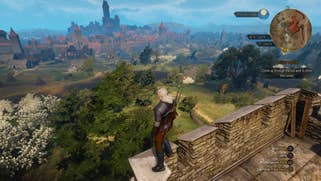

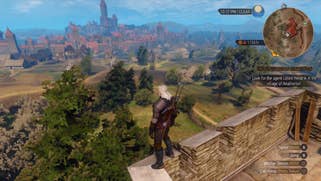
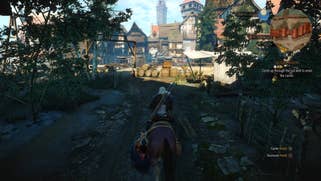




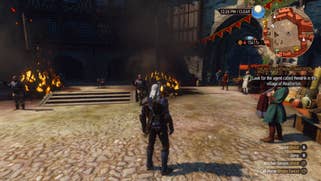

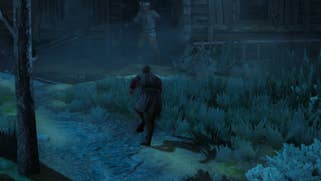


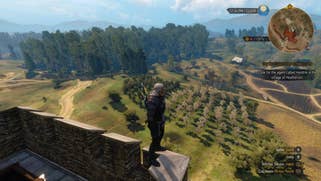




The Witcher 3's drive for compression also has an impact beyond FMV quality. Textures and sound also take a hit. Texture assets and filtering are of a notably lower quality, where a form of trilinear filtering is used which adds to the generally blurry look - while the assets themselves are essentially very similar to the PC' version's low setting. Again, playing portably dramatically lessens the impact of the reduction in quality. The other issue here is audio compression. We aren't looking at anything as noticeable as the drop to quality seen in Dark Souls Remastered, but it is there.
In terms of visual features, we settled on two comparisons - PlayStation 4 and PC. We can look to the Sony console as the ideal that Saber and CDPR might have strived to match, while the PC game configured to 720p on low settings is closer to the reality the developers were likely to deliver.
There are few surprises in terms of console comparisons. Beyond the resolution drop, shadows, textures, and LODs are altered. Panning around the outskirts of Novigrad, foliage density is pruned back significantly. It's all reined in, creating a generally less filled out world - at a distance anyway - on Switch. It's amazing what's achieved on a smaller, less powerful system, but the trade-off to make it happen can't be overlooked.
The stripped back PC head-to-head is fascinating though. There's an interesting test here, to see how custom-tailored the game is for Switch. First off, there's very similar texture mapping and filtering quality here, and likewise for shadows. Grass draw and density are better on PC, but it's surprising how full Switch still looks on a ground level. The only real drawback is that grass doesn't animate like it does on PC and it does look rather odd by comparison, especially when the developers managed to make taxing effects like water and object physics look just right on Nintendo's hybrid.
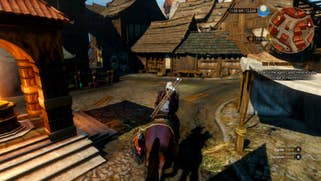

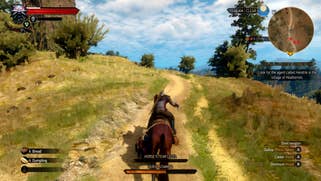
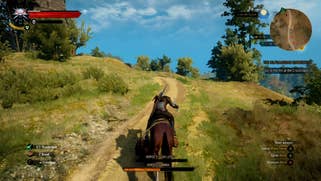
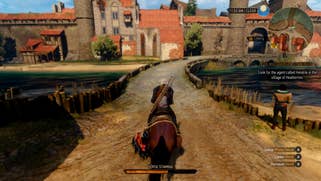

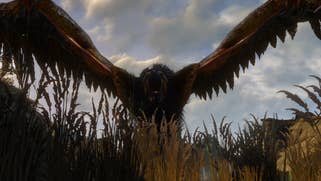

It goes to show how bespoke this build is. On balance, this is the nearest setting officially possible on PC, without making use of mods. All told Novigrad holds up convincingly; LODs on the market ahead are reined in, and we're missing some tree detailing to the sides, but otherwise? It's very close. It's a shame pop-in is an issue at points on Switch, where PC just ploughs straight through without any issue - but clearly this is the baseline the developers worked from to get it running at all.
All of which leads us up to performance. While a living room flat panel isn't the best way to experience the visuals, docked play is definitely smoother. There are still some glaring drops, but as a baseline the game is as well tailored for the system as you could hope for. And while there are some notable dips, the bulk of the time in areas like Velen - at least outside towns - delivers a mostly solid 30fps. Docked play is solid, but dense areas like Novigrad will see performance drop to something closer to 20fps.
Portable play is similar, but not quite as robust overall. Once again, we're looking at 30fps, but when taxed in stress points it'll go into the 20s. Overall, it feels simliar to the docked experience, but side-by-side tests - especially in cutscenes - do show some differences, especially when the GPU is pushed hard with alpha effects. Crookback bog, shows a 3-4fps difference in favour of the docked experience, for example. On balance, everything works but it's not completely ideal, and while the Switch version retains the ability to adjust post-processing effects, I noted no performance improvements for doing so, whether in docked or mobile play.
Overall, Saber and CDPR hit an impressive bar of quality here. Clearly, performance can vary, but on balance it holds 30ps more often than I expected. The Witcher 3 Complete Edition pruned back everything it can to be playable, while still somehow retaining a lot of its best visual features. Graphical points like reflections, light shafts, water physics, and even a high NPC count are incredible to see on a handheld.
This is close to perfection. The only thing you more you could ask for is a cloud-based mechanism, to transfer PC save games to Switch and vice-versa. The feature worked brilliantly in Divinity: Original Sin 2 and suits a massive-scale adventure game like this one. Being able to play an uncompromised experience at home on PC, and swapping seamlessly over to Switch for portable play, would delivered the best of both worlds for the most ardent Witcher 3 players. And I really should stress that the handheld experience is very special overall. In fact, it's a stunning technical showcase for the Switch and a credit to the developers at Saber Interactive and CD Projekt RED.


